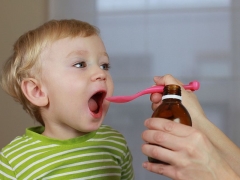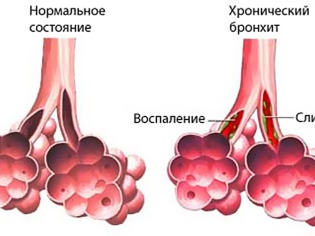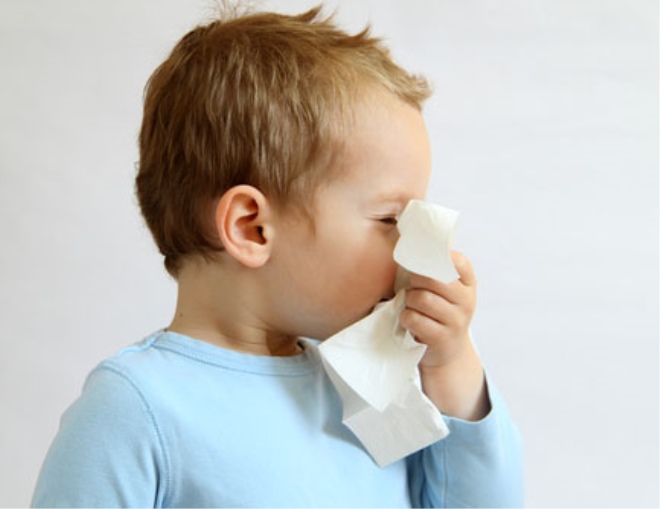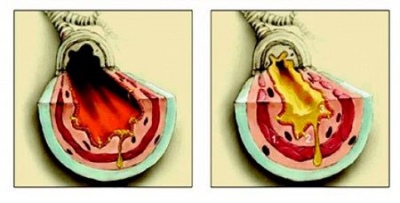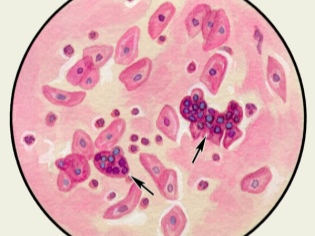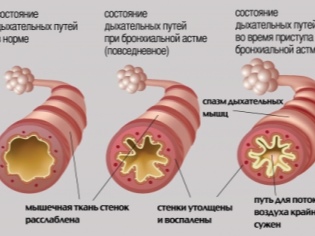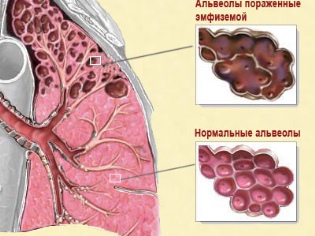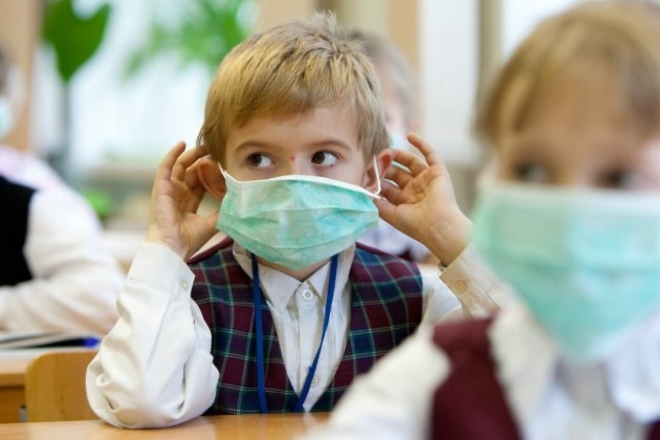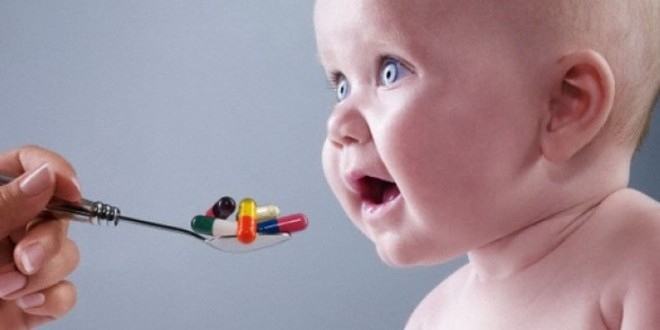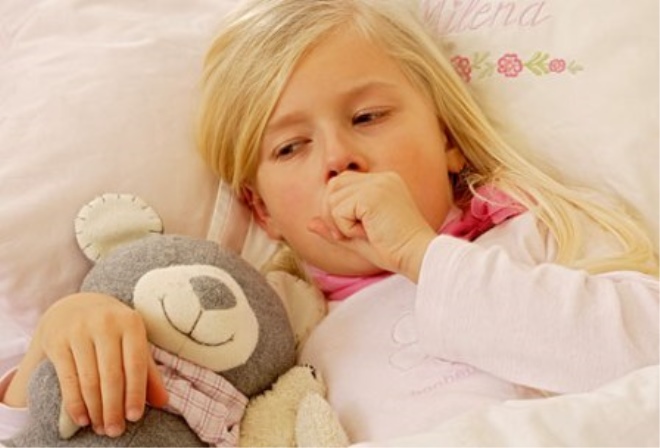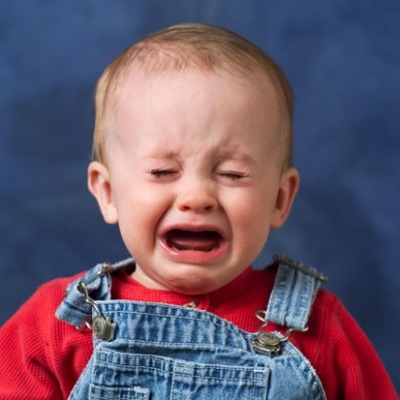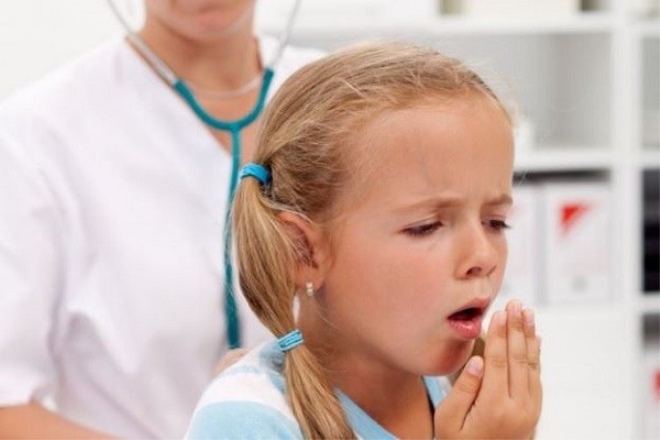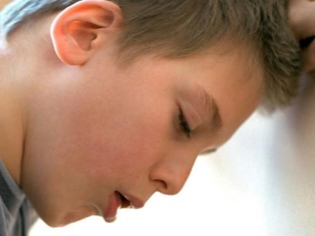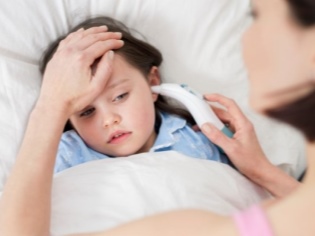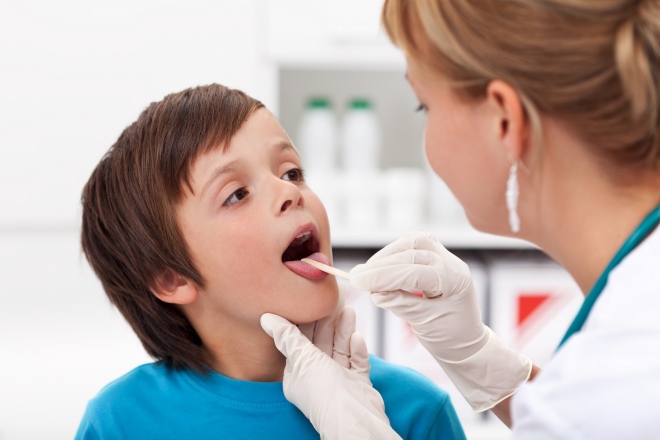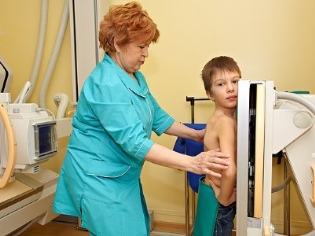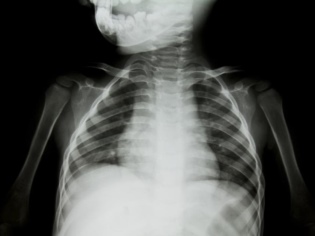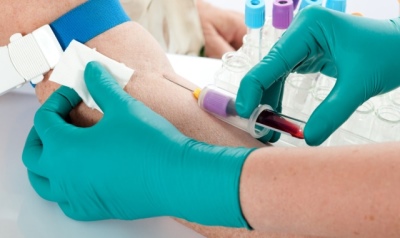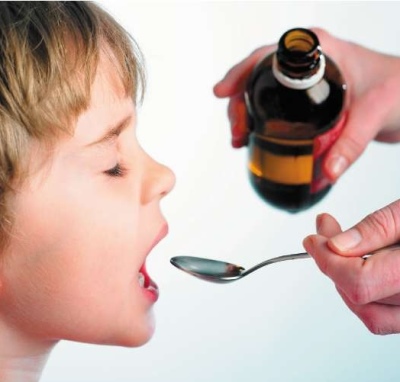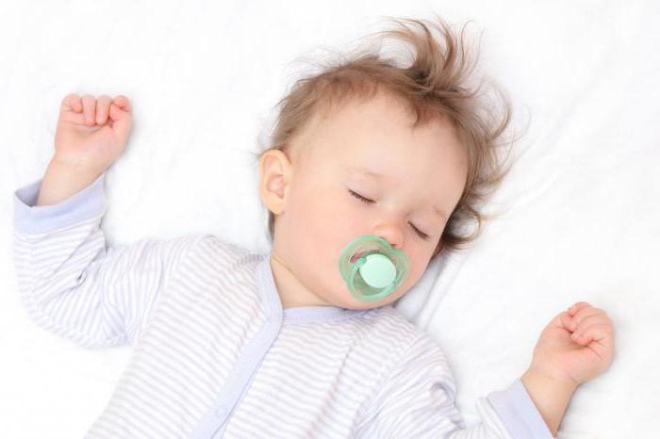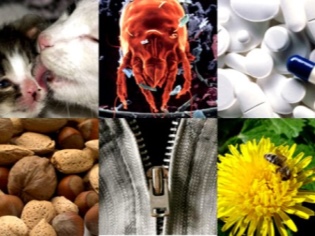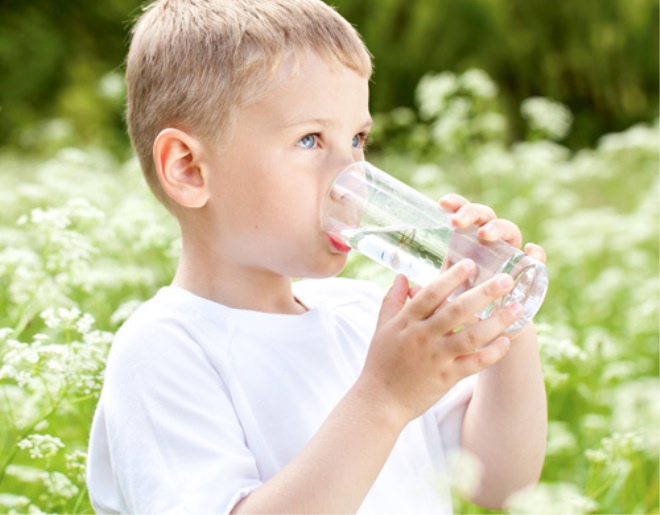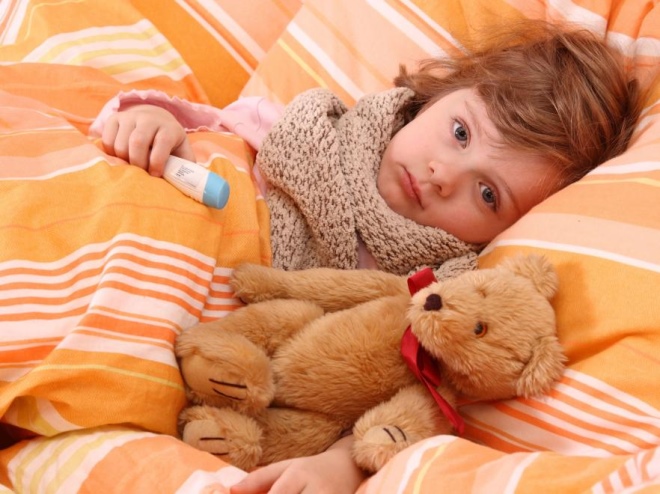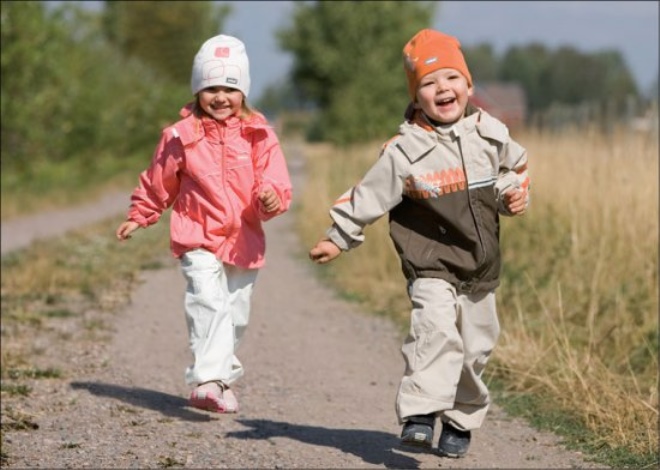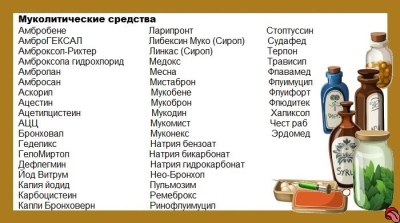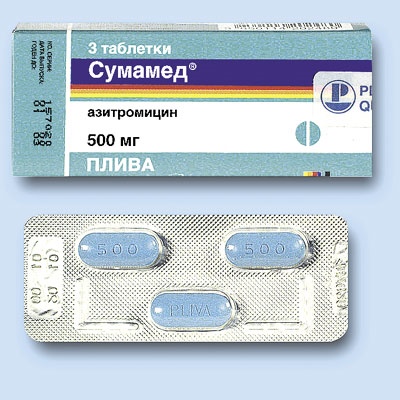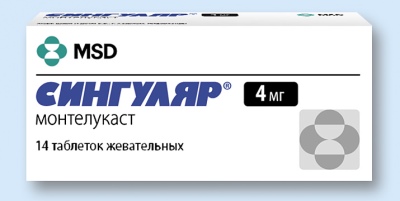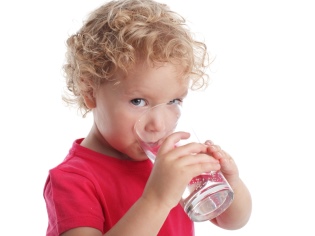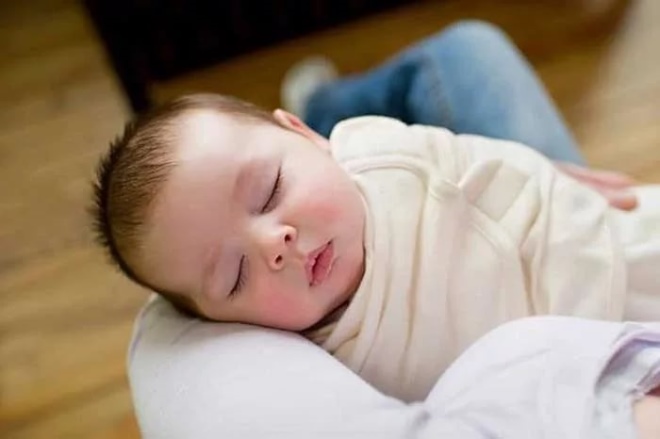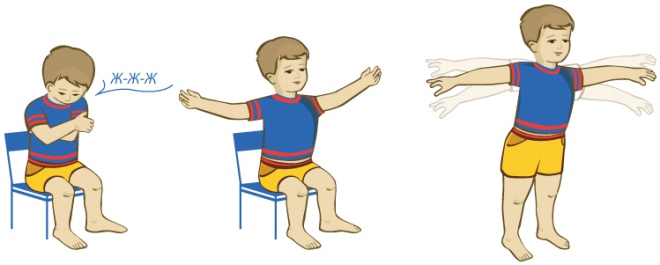Symptoms and treatment of obstructive bronchitis in children
Obstructive bronchitis in children
Everybody suffers with bronchitis - both kids and their parents. But in children, it happens more often. In this case, the disease often gets a new name - obstructive bronchitis. What this means, is the disease so dangerous, how it seems and how to treat the child, we will try to tell in this article.
What it is
Obstructive bronchitis in children - This is an inflammation in the membranes and the muscular wall of the bronchi, accompanied by obstruction. So doctors call the closure of the lumen of a hollow organ. In this case, closed, clogged small and medium bronchi. This does not happen by itself, but against the background of acute bronchitis.
The mechanism of obstruction will be more understandable if you know how the inflammation of the membrane and wall of the bronchi begins and develops. Most often (in about 85% of cases) the child becomes infected with a viral infection. Viruses penetrate into the nasopharynx, causing a runny nose as an immune response, and from there to the larynx, where a local defensive reaction occurs, which causes the throat to turn red.
Especially aggressive and tenacious viruses quickly overcome the two previous “fasting” immunities (nose and throat) and penetrate into the lower respiratory tract. The bronchial mucosa also meets uninvited “guests” with local immunity and begins to actively develop bronchial secret - Special mucus that is able to bind and neutralize the activity of viral particles.
Task bronchus quite understandable - to prevent the penetration of viruses further - into the lungs. And their main weapon is mucus. And everything goes fine, while this mucus is liquid. If under the influence of adverse factors (high temperature of the child’s body, dry or dusty air, which he breathes, etc.) begins to thicken and dry out, then from the protective device will immediately turn into an excellent environment for the reproduction of pathogenic microbes.
Staphylococci, pneumococci, other "cocci" and not only they will gladly take advantage of this. And then bronchitis will become complicated by a secondary bacterial infection. Dry mucus creates another big problem - it clogs the bronchi of small and medium caliber, the pulmonary ventilation is disturbed, excellent preconditions for pneumonia are created.
It is this condition of bronchial obstruction that is understood to mean obstructive bronchitis. This disease is always better to prevent than to treat, but to prevent it turns out, alas, not always. If such a diagnosis is established, it does not mean that you need to panic. This is a signal for immediate action.
First of all, you need to understand what kind of disease in question, because obstructive bronchitis can be both acute and chronic. In most cases, children have the first option, the chronic form is usually the lot of adults. A chronic illness can be discussed if a persistent wet cough accompanies the child without stopping for more than 3 months, and such periods have been observed for at least two consecutive years.
Danger
Changes that occur in the bronchi may be reversible (bronchospasm, inflammation of the mucous membranes and submucous membranes), and may qualify as irreversible. These dangerous transformations include narrowing of the lumen of the bronchi, prolapse of the membrane wall.
The most dangerous complications bronchial obstruction - this pulmonary emphysema, heart pathologieswhich are associated with an increase in body size due to increased blood pressure in the small circle (pulmonary), recurrent acute attacks of respiratory failure, bronchiectasis (state of the pathological expansion of the bronchi).
The structural features of the respiratory organs of children consist in the fact that their respiratory tracts are narrow, it is rather difficult to move out to the outside even with a favorable course of the disease.
That is why it is very important not to self-medicate bronchitis in general, and if it is an obstructive form, then only qualified doctors and modern medications will help to avoid dangerous consequences.
The reasons
Obstructive bronchitis most often develops against the background of acute viral bronchitis, which, in turn, is a fairly common consequence of infection with influenza, parainfluenza, measles and other viral agents that are active in the respiratory ratio.
With this disease, bacterial complications that develop against the background of bronchial obstruction are not excluded. This will require a change in approach to treatment, rehabilitation.
Bacterial lesions of the bronchi themselves are quite rare. Such illnesses are more severe than viral ones, but the forecasts are quite favorable, since antibiotics exist and are widely used in the 21st century, they promptly and effectively deal with the pathogens that have settled in the shell or wall of the bronchi.
Sometimes obstructive bronchitis in children is caused by prolonged allergic or toxic effects. This is the most dangerous form of obstruction, since it results in a narrowing of the lumen, not even because of thick bronchial secretions, but more because of the swelling of the tissues.
The risk factors that trigger the development of obstructive bronchitis are as follows:
- inhalation of dust, tobacco smoke, gases, chlorine vapors and other chemicals;
- too dry air in the room where the child is with ordinary acute bronchitis;
- improper treatment of acute bronchitis;
- the general distress of the child - malnutrition, lack of vitamins, prolonged stress;
- frequent colds and other diseases that reduce the ability of the immune system to defend itself;
- chronic or prolonged runny nose, other violations of nasal breathing;
- genetic predisposition of the child to allergies, especially to its respiratory manifestations.
The risk of obstruction with the most common acute catarrhal bronchitis increases several times if parents do not immediately begin to take measures to create conditions that are optimal for normal recovery.
If the baby continues to breathe dry air in the apartment, if there are heaters in his room, and he himself is wrapped in some warm clothes, there will be no sense from treatment even with very expensive and effective drugs. It is highly likely that thickening and drying of bronchial mucus will occur, and obstruction will begin.
A prerequisite to prevent the blockage of small and medium bronchi is humid air in the room, coolness, airing and wet cleaning. More information about the necessary parameters - just below.
Symptoms and signs
Obstructive bronchitis is not often an independent disease, it is usually a complication of acute bronchitis or viral disease. Therefore, the symptoms at the initial stage will completely repeat the clinical picture of a disease. When the flu first appears fever, pain in the muscles and throat, headaches, and only then signs indicating bronchitis.
In case of allergy, the symptoms do not appear immediately either, but after a rather long exposure to allergens.In all cases, obstructive bronchial disease has its own distinctive signs that allow you to suspect the illness and make the necessary diagnostics in time:
- Body temperature is usually not high.more often it remains within the range of subfebrile values - 37.0-37.9 degrees.
- There may be minor sore throat., slight redness of the mucous membranes. This symptom is not mandatory.
- The main symptom is cough. It appears almost immediately with the onset of respiratory manifestations and the first 3-5 days is dry and barking. Its intensity at night increases markedly. After a few days, a dry cough turns into a productive wet, accompanied by expectoration of sputum.
- Obstruction may indicate appearance of severe shortness of breath The child has even from insignificant physical exertion or, in general, at rest.
- Often with obstructive form of the disease in a child appear wheezing when breathing, their parents will be able to hear even without appropriate medical education and special devices. Rattles are very well distinguishable by ear.
- The child due to lack of oxygen, which is a consequence of the violation of pulmonary respiration, becomes sluggish, drowsy, apathetic. He sweats heavily even in the absence of high temperature. This condition is often called "cold sweat."
- The phlegm, which the child coughs with difficulty, has a rich yellow color., sometimes impurities of greenish or brown color are visible in it, fragments of crusts of dried out secret.
Most symptoms disappear gradually as the treatment progresses. During the first week the temperature and sore throat usually go away, but the cough may persist for about 3 weeks. There are more protracted conditions, but it depends on the individual characteristics of the organism, on the state of immunity and the correctness of the chosen treatment.
Diagnostics
Given that obstructive bronchitis is a serious danger to the children's body, parents must call a doctor or visit a pediatrician at the clinic in the community. First of all, the doctor will evaluate the totality of all the symptoms and “listen” to the child with a phonendoscope. Obstructive form of the disease peculiar wellhard breathing, scattered wheezing. A sputum sample will be taken for analysis.
The method of bacposev in it will be able to establish if there are bacterial or fungal lesions of the bronchi, this knowledge will help you choose a very specific antibiotic that is most effective against a particular microbe.
The doctor may give directions for radiography of the lungs. X-rays will eliminate other possible problems with the lungs - tuberculosis, emphysema, etc. X-rays are not prescribed to everyone. Bronchoscopy with obstructive disease is almost always prescribed. The procedure is quite simple; it involves taking mucus for analysis and examination of the condition of the bronchial mucosa.
A blood test will also be required. We will have to do a general analysis, biochemical and a special type of analysis, which allows us to establish the degree of respiratory failure - a blood test for gas composition.
If viral bronchitis is difficult to cure, recurs, the doctor may order an immunological examination of the blood and sputum to identify the specific virus that causes the pathogen. In most cases of uncomplicated bronchitis caused by SARS or influenza, such an analysis is not required, since the majority of viral infections are successfully treated according to the standard scheme.
Treatment
Usually, bronchitis is allowed to be treated at home. However, infants or newborns with such a diagnosis must be hospitalized.
Treatment of bronchitis, complicated by obstruction, is not on the list of drugs on the prescription list. This is a whole range of activities that will fall on the shoulders of parents and in which pharmaceutical preparations are not at all important. The basic principle of treating any bronchitis is dilution and the withdrawal of sputum accumulated in the bronchi. If it is sufficiently liquid, then there will be no blockage, and if an obstruction did occur, it can be managed with the same therapeutic approach.
First of all, using a special hygrometer device, you need to change the humidity of the air in the apartment, if it is below 50%, it means that the air is too dry and inhalation causes the bronchial secretion to dry. If the humidity is above 70% - the air is too humid, this creates additional risks with severe inflammation. Recommended mode - 50-70%. How to create it, they know all the grandmothers.
To do this, mom needs to hang wet towels and sheets around the house and wet them again when they dry. In addition, they set up basins and containers with water so that it can evaporate freely. Helps in this situation and the aquarium with fish.
However, there is a simpler and more accurate way to create optimal conditions for the child to recover quickly. For mom everything can be done by a special device - a humidifier. They are ultrasonic, steam and "cold". Which one to choose is up to the parents. Many models are equipped with their own hygrometer and humidity sensor, as soon as the humidity reaches the set values, the device turns off.
The air temperature in the apartment should not be too high. The best values are 18-20 degrees. Many mothers will find that it is cold, but in this situation it is better to dress the child warmer than usual, but do not disturb the recommended room temperature, because it is these temperature indicators that are important for inhalation. It is necessary to wear a child with bronchitis wisely, since the disease is associated with excessive sweating. Baby should not sweat. After walking, you must take a warm shower and change your baby in clean clothes.
During treatment, it is especially important for obstructive bronchitis of allergic origin, it is important to eliminate from the child’s habitat everything that is potentially dangerous in terms of the spread of allergens - to limit contact with pets, to remove dust from the child’s bedding - carpets and soft toys. Wet cleaning done with ordinary water without the use of detergents, especially on the basis of chlorine. Wash baby clothes only with hypoallergenic baby washing powder and be sure to additionally rinse with clean water.
Liquefaction of sputum contributes to drinking plenty of water.
The baby should be given as much juice, tea, water, fruit drinks and fruit drinks as possible, avoiding carbonated drinks, too sour and too sweet drinks.
It is desirable that the temperature of the liquid was equal to the temperature of the body, so drinking quickly absorbed. You can additionally irrigate the nasal cavity with saline (1 teaspoon of salt per liter of boiled water) so that the nose is not stuffy. With a cold, the baby breathes through his mouth and this additionally dries the mucous membranes.
When the temperature is necessary to provide bed rest. This is important in the initial stage of bronchitis. But as soon as the temperature dropped, and the cough became wet, the child is recommended increased motor activity, because it contributes to the discharge of sputum.
It is possible and necessary to walk for a long time on the street, play active games, do gymnastics in the fresh air.
During the acute period of the disease, it is better to make changes in the diet of the child - enter a diet that excludes spicy and salty foods, so as not to irritate the mucous membranes of the larynx.
Depending on the type of bronchitis and its origin, add some medications, procedures, physiotherapy to these recommendations.
Inhalation
At home, parents usually use steam inhalers and nebulizers for inhalation. The use of the first in obstructive bronchitis is not considered advisable, since the inhalation of the vapor moisturizes only the nasopharynx and larynx, the vapor particles simply do not reach the bronchi.Medical inhalations with the use of a nebulizer should be carried out only on the recommendation of a physician and with the use of pharmacy drugs.
The nebulizer is designed in such a way that it disperses the liquid substance into smaller dispersed particles.that are able to reach the lower parts of the respiratory system - the bronchi and lungs. The course of such inhalations with the use of drugs such as "Berodual", Allows you to cure the obstruction much faster, because the particles of the drug go directly to the site of inflammation and act to a point.
Do not pour mineral water, decoction of chamomile or plantain into the nebulizer, as the device is intended for medicines. Inhalation should not be carried out during an elevated temperature. It is not recommended to carry out such procedures without special devices, since inhalation of vapors from hot potatoes under a blanket often leads to burns to the respiratory tract.
Medications
The main drugs in the treatment of obstructive bronchitis are mucolytic and expectorant drugs.. They are necessary for liquefaction and discharge of sputum, and this, as we already know, is basic in the treatment of this ailment.
It is very important to understand here that mucolytic drugs are not antitussives and asking the pharmacist to give “something for cough” is wrong.
"Cough" is antitussive drugs. They suppress the cough reflex by acting on the cough center in the brain. With bronchitis, cough is very important and necessary, since without it, sputum discharge will be impossible, there is no other way out for the bronchial secretion. Reception of antitussives is absolutely contraindicated in case of bronchitis with obstruction.
Expectorants and mucolytic drugs permitted in childhood:
- "ACC";
- «Bromhexine»;
- «Mukaltin»;
- Syrup "Alteyka";
- «Codelac Broncho;
- «Herbion»;
- "Lasolvan".
If the cause of bronchitis lies in viruses, the doctor may recommend at the initial stage of the disease antiviral drugs "Viferon", "Anaferon" and others. To use them or not is up to the parents. Today, official medicine has no evidence of the effectiveness of antiviral drugs, and therefore no one can guarantee that they will at least somehow affect recovery. Even that pediatrician who will appoint them. The same goes for homeopathy. Syrups and tablets, which are homeopathic preparations, are not medications, do not have proven efficacy. Although it does not harm the child, that is why their doctors do not prohibit taking even small ones.
With bacterial inflammation in some cases (not always!), The doctor prescribes antibiotics. Children with obstructive bronchitis are usually recommended penicillin group antimicrobials, such as "Amoxiclav», «Amoxicillin". If the penicillins do not cope with the task, the microbe is resistant to them, then the doctor may prescribe antibiotics of other groups - macrolides or cephalosporins. In difficult cases, good help "Sumamed».
In case of allergic lesions of the bronchi, the treatment is best carried out in a hospital, since this condition is very dangerous and swelling can lead to suffocation. If the doctor allows treatment at home, he will definitely prescribe antihistamines, such as "Suprastin" or "Loratadine". Sometimes the child is shown hormone therapy. The non-steroidal anti-inflammatory drug Ibuprofen has also shown itself effectively, it is used at high temperatures as a febrifuge and gently relieves inflammation. Another non-hormonal anti-inflammatory drug that helps with the disease - "Singular».
Folk remedies
To treat a child only with folk remedies for obstructive bronchitis is not worth it; the cost of an error and lost time may be too high. But some funds from our grandmother’s arsenal may well help in the process of liquefying sputum.This is, first of all, warm herbal teas. In parallel with the therapy prescribed by the doctor, the child can be given a drink of a medicinal chamomile decoction, raspberry or currant tea, plantain decoction, ginger water. All these measures should be included in the creation of a special, abundant drinking regime, as discussed above.
When it comes to national treatment, it is always easier to explain what you can not do at home, because the list of what is possible is quite long.
With obstructive bronchitis can not:
- To rub the child’s chest and back with a badger or other fat, especially against the background of high temperature. This leads to overheating, impaired thermoregulation, and accordingly - contributes to the drying of mucus, and not its abduction.
- At a temperature, rub the child with vodka or cool water, as this can lead to vasospasm.
- Do various warming compresses and wraps, if the child has the likelihood of developing a bacterial complication, but there is almost always. Compresses and wraps themselves, in the opinion of most modern pediatricians, in no way affect the healing process, however, create favorable conditions for the reproduction of bacteria, since microbes adore heat in all its manifestations.
- Do not give the child, even drip, tinctures containing alcohol.
- All folk remedies based on the use of medicinal plants, can be deadly for children with allergic obstruction, since the plants themselves are allergenic.
Breathing exercises and massage
Respiratory gymnastics is very useful at the stage of recovery, when only cough remains and it is important to get rid of it as soon as possible. The most rapid recovery of the affected mucous membranes of the bronchi contribute to the exercises by the method of Strelnikova. It is based on a strong and intense inhale through the nose and a relaxed exhale through the mouth. During such rhythmic breathing, the child will perform certain exercises described in the method. It is best to conduct such classes in the form of a game, in the open air, when the disease comes to the finish line.
Drainage massage well helps in the process of sputum in the second stage of the disease. It can be done even for babies. To do this, fingertips should make light tapping movements in the ribs, chest and back. An older child should be laid face down on the knees so that the priests are slightly lower than their heads, with similar tapping movements they massage the chest, back and the child, and then they ask the child to stand and cough.
Prevention
There is no vaccination for bronchitis, but the correct lifestyle will help reduce the likelihood of such a disease. The main measure of prevention is immunity strengthening.
To do this, the child must walk a lot, breathe fresh air, play sports. Nutrition should include an adequate amount of vitamins, trace elements.
It is important not to abandon the prophylactic vaccinations that are required by age, they significantly reduce the likelihood of contracting dangerous infectious diseases, of which bronchitis becomes a frequent complication. With the onset of respiratory disease, it is important to prevent the mucus from drying in the nose, larynx, and bronchi to avoid obstruction.
Treat any disease you need correctly. For example, the use of antibiotics for viral infection at times increases the likelihood of complications, including bronchial obstruction.
Children with a tendency to recurrent respiratory diseases, private obstructive manifestations, it is important at least once a year to visit the seaside resort. In order not to make things worse, you need to choose the seas that are closer to your native region, since the peculiarities of the air in exotic countries can cause a baby to strong and painful acclimatization to the sea and the therapeutic rest will turn into an agonizing one.
How to treat bronchitis in children, see the video below.
